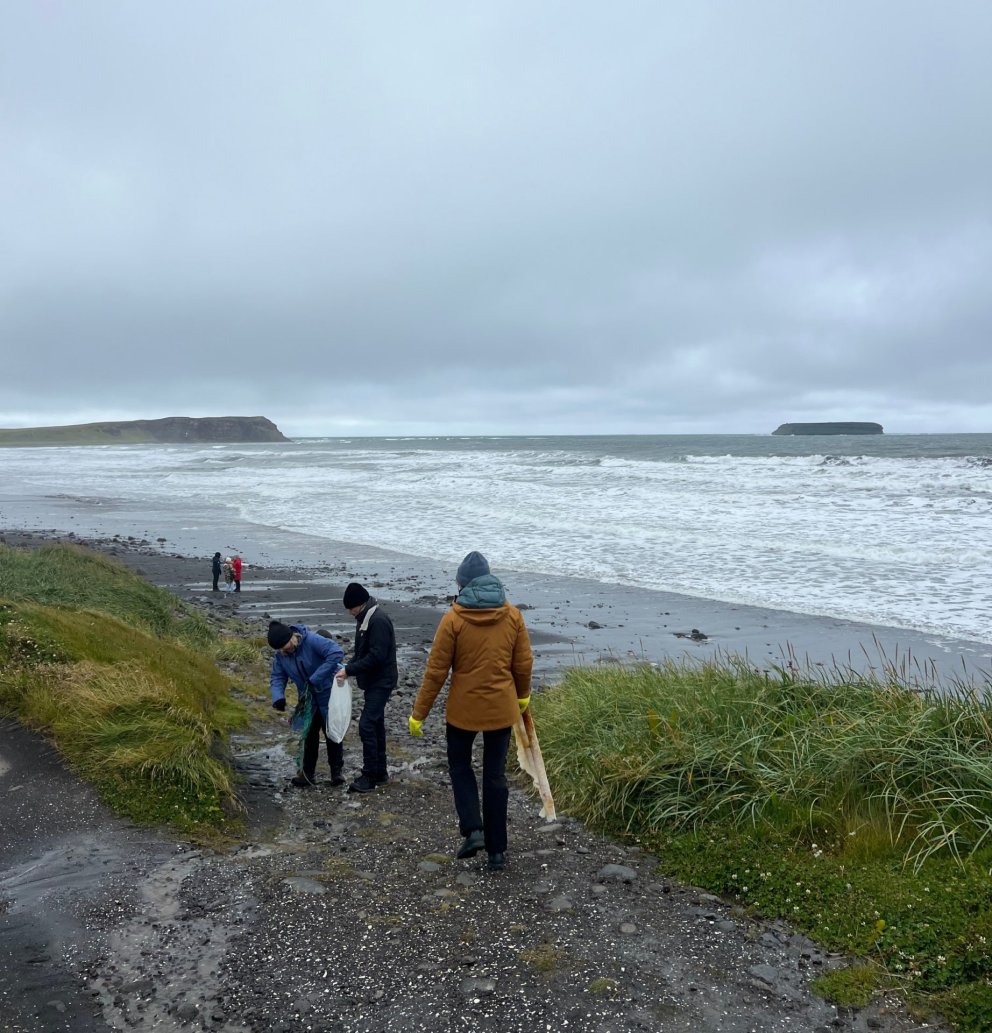Upcoming: ICEBERG Second Fieldwork Period
The ICEBERG research project returns to Akureyri and Húsavík for its second field season in Northeast Iceland next week, from May 25 to 31.
A group of ICEBERG scientists will join their fellow researchers at the Stefansson Arctic Institute on Monday, where they will conduct fieldwork before heading to Húsavík on Tuesday afternoon. The group will stay in Húsavík until Friday. After concluding their fieldwork in Northeast Iceland, the group will travel to South Greenland for their second field season in Qaqortoq, Narsaq, and Nanortalik.
For the full ICEBERG press release, please see below:
ARCTIC ICEBERG, ICELAND FIELDWORK PRESS RELEASE 23.5.2025
Project ICEBERG returns to Akureyri and Húsavík to study pollution and its cumulative impacts
The international and multidisciplinary research project ICEBERG returns to Akureyri and Húsavík for the second fieldwork period from May 25 to 31. Local residents and stakeholders are invited to take part in doing research and co-creating solutions for pollution.
The EU-funded research project ICEBERG returns to Akureyri and Húsavík for the second fieldwork period from May 25 to 31. During this period, researchers collect data on marine litter, specifically weathered plastic debris, and the impacts of pollution on local ecosystems. The goal is also to gain deeper insights into how these environmental changes are perceived by the local population.
“We are excited to return to North Iceland this May to continue our fieldwork. We are expanding our Citizen Science approach by working side by side with local residents and stakeholders to gather data to better understand how marine and coastal pollution is impacting both the fjord environment and everyday life,” says Project Lead Thora Herrmann from the University of Oulu, Finland.
“Our goal is to deepen our collaboration with a wide range of local partners, to make sure the knowledge we generate together is not only scientifically strong, but also grounded in the local realities of Akureyri and Húsavík. That way, the solutions we develop are practical, meaningful, and work for the people who live here,” she says.
Iceland is a good case study location for studying pollution in the Arctic because of the increasing environmental pressures caused by both climate change and intensified human activities, particularly in Iceland’s coastal areas. With rapid glacier melt and the infl ux of pollutants into the fjord systems due to expanding maritime traffic, including fishing vessels, whale-watching boats, and especially cruise ships, Iceland’s coastal and marine ecosystems are under significant challenge.
The project’s goal is to understand how these changes are affecting ecosystem health and communities socially, economically, and environmentally.
Local communities’ insight is crucial for research
During the fieldwork period, researchers of ICEBERG will interview local stakeholders such as municipal leaders, tourism operators, fishers, youth and women’s groups, and environmental agencies.
“Together with these local stakeholders, we will work to identify key pollution hotspots and areas of concern, while collecting data on marine and coastal pollution. All this work feeds directly into the co-creation of realistic, community-based strategies to mitigate and adapt to these environmental challenges,” says Project Co-Lead Élise Lépy.
In the year 2024 fieldwork period, ICEBERG held a community consultation meeting in Húsavík to introduce the project to the community, share their goals and listen to local perspectives. Researchers also successfully trained local citizen scientists in data acquisition techniques, including drone flights and pollution monitoring using cameras installed during beach clean-ups.
This year, this work continues. Local people will be able to actively contribute to the research, for example, by flying drones along the coast of Húsavík to document litter, participating in beach clean-ups, and contributing to workshops and interviews. In addition, a great way to participate is taking photos of visible pollution or detecting other types of pollution and uploading these data to the project’s interactive Community Monitoring Platform (uMap).
Herrmann and Lépy emphasize how important the local’s perspectives are in investigating pollution. The project’s goal is to ensure that local people are not just consulted, but actively involved at every stage of the project: from monitoring and data collection to analysis and decision-making.
Huld Hafliðadóttir, community liaison from STEM Húsavík and ICEBERG advisory board member, adds:
"It is incredibly valuable for the community to gain insights from international scientists, as well as access to tools and knowledge that would not otherwise be available. At the same time, it is crucial to work with the local people and the community itself and to get them as involved as possible. For STEM Húsavík, it has been invaluable to act as the liaison with the community, as well as for me to serve on the advisory board of the project."
More information
For further information and interview requests, please contact
Project Scientific Coordinator
Thora Herrmann thora.herrmann@oulu.fi
Co-coordinator, Project Manager
Élise Lépy elise.lepy@oulu.fi
About the project:
Climate change and pollution, including plastics, ship emissions and wastewater, pose signifi cant threats to human health and the ecosystems of the Arctic region. The EU-funded ICEBERG project is tackling these problems in collaboration with Indigenous and local communities. From 2024-2026, ICEBERG studies pollution and its impacts on the ecosystems and communities in three regions in the European Arctic: Kalaallit Nunaat (Greenland), Iceland and Svalbard. Through innovative community engagement, ICEBERG will co-develop resilience strategies to combat pollution and climate change, while also creating recommendations for new pollution-control governance.
